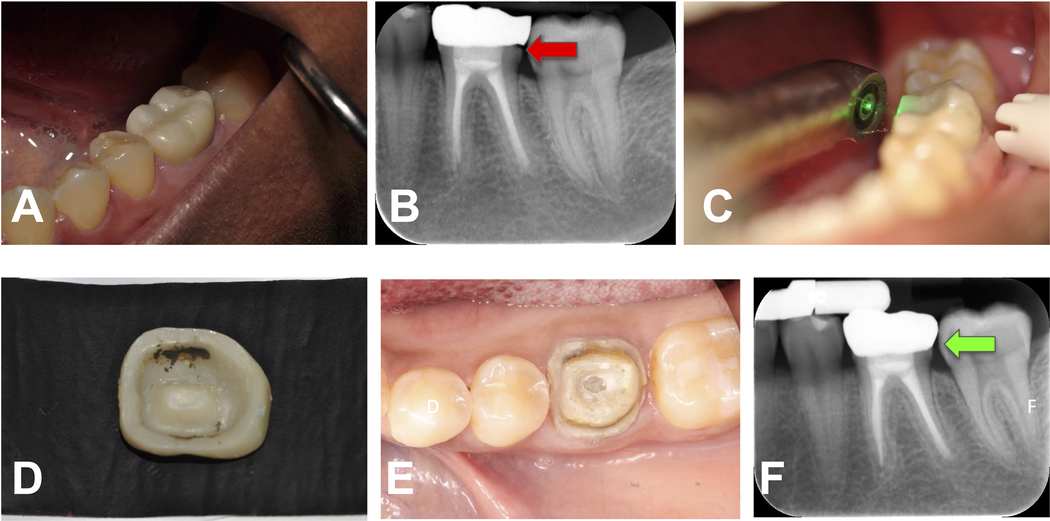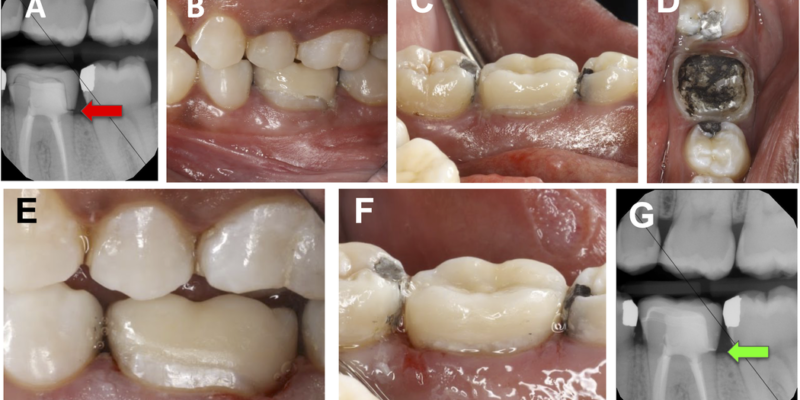A recent study has shed light on the effectiveness and practicality of erbium lasers in removing ceramic restorations and appliances from natural teeth and dental implant abutments.

Debonding and recementation of posterior zIrconia crown on natural tooth abutment.
The research, conducted through a retrospective analysis, offers valuable insights for dentists seeking safer and less invasive methods for these procedures. The study analyzed 29 clinical cases involving 52 abutments requiring the removal of various ceramic restorations.
Researchers meticulously evaluated the clinical procedures undertaken, including the prosthetic type and material, cement type, laser setting parameters, retrieval time, and overall retrieval success.
The results of the analysis revealed a remarkable success rate, with 50 out of the 52 abutments (over 95%) being successfully retrieved without any damage.
The study utilized Er, Cr:YSGG lasers in 6 cases and Er: YAG lasers in 46 cases. Notably, only one case required partial sectioning of a crown to mitigate potential negative impacts of laser irradiation on the adhesive strength between the post and tooth, while a single fracture occurred during debonding.
The majority of the restorations were comprised of:
- 13 lithium disilicate units
- 39 zirconia units
These included six veneers, 38 single crowns, and three fixed partial dentures (FPDs).
Retrieval times varied depending on factors such as restoration type, material thickness, cement type, retention form/fitting of the abutment and restoration, ranging from 2.25 ±0.61 minutes for veneers, 6.89 ±8.07 minutes for crowns, to 25 ±10 minutes per abutment for FPDs. Zirconia crowns, in particular, required more time for removal compared to lithium disilicate crowns.
The study’s findings underscore the safety and efficacy of erbium lasers as a viable alternative to invasive methods for removing ceramic restorations. Laser-assisted debonding not only ensures preservation of abutment and prosthesis integrity but also allows for recementation of restorations during the same appointment, making it a conservative and practical option for ceramic crown retrieval in clinical settings.
For dental practitioners, these findings offer valuable insights into the adoption of erbium lasers as a safe and effective tool for ceramic restoration removal. By incorporating laser-assisted debonding into their practice, dentists can enhance patient experience, minimize procedural risks, and optimize treatment outcomes in various clinical scenarios involving ceramic restorations.
Source: https://journals.plos.org/plosone/article?id=10.1371/journal.pone.0295957




















Comments